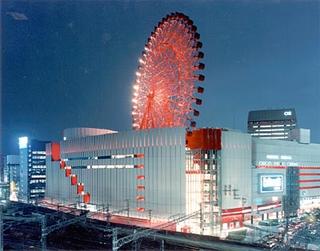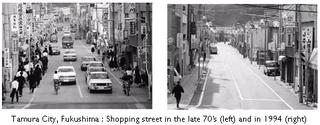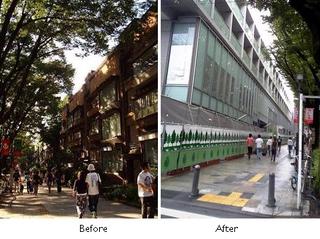Koizumi’s reforms have prompted widespread asset sales by Japan’s government agencies, especially in the bloated and inefficient public leisure and hotel sector. In many cases, retired bureaucrats were given very cushy positions in the ‘semi-public’ bodies set up to run the resorts (
amakudari), while the properties were grossly mismanaged and unprofitable. The public pension fund, which managed the whole show, has racked up enormous losses in the process. Read on…
Japan Post is
selling 202 unused properties such as former employee housing and post offices this year, and is also going to
sell off hotels, resorts, and welfare facilities owned and operated by its insurance division (the largest in the country). About half of these are loss-making. However, its choicest asset, the Tokyo Central Post Office in front of Tokyo Station, and therefore smack bang in the middle of the most expensive area in Japan, is probably going to be securitized and redeveloped as an office building (although some groups have
protested the demise of the 1931 building).
Japan Highway Corporation, which was privatized on October 1 (see
this story), has
sold off 45 billion yen (in book value) of unused real estate. The properties include left-over land from highway projects, luxury condominiums, and leisure facilities. Glad to see the old corrupt monster being given the hatchet job, but given their habit of overpaying for land and construction, don’t count on them getting anywhere near the 45 billion back from the private companies they sold to. (
Update: the Nikkei
takes a dim view of the privatizations, saying that the new firms 'lack logic' and are 'ill prepared for privatization' ).
Citizens are relieved that the massive portfolio of
resorts,
hotels, and
welfare facilities owned and funded by the Social Insurance Agency (
over 2,400 nationwide) will be sold off through a new body formed this month called the
Pension and Welfare Facility Resolution Corporation. The Agency had come under
intense criticism for the gross waste of public funds and mismanagement of the resorts, including many cases of
amakudari, letting them bleed money on a huge scale from the pension coffers. The Yomiuri
wrote, “funds were withdrawn from the special account for the public pension funds to construct and maintain the facilities. Such expenditures exceeded 20 billion yen for the first time in fiscal 1977, more than doubling to reach 47.1 billion yen in fiscal 1982 before peaking at 79.1 billion yen in fiscal 1995”. Some of the largest have already been divested: the 13 mammoth
Greenpia resorts, which took 350 billion yen to build in the 1980’s and 1990’s, have been sold at around 4% of their book value, mostly to local governments. It remains to be seen whether local governments can manage the facilities better.
There are still many other resorts operated by government agencies, including Kokumin Shukusha (People’s Lodges), Kyuka-mura (Holiday Villages), and Ryoko-mura (Travel Villages).
This site offers a comprehensive list of these and other hotels and resorts mentioned in this post. Oh, and I haven’t even mentioned the
amakudari-basket hotels and resorts operated by
local governments and their respective semi-public organizations…
Japan Real Estate BlogTags : japan, real estate, property, investment, 不動産







